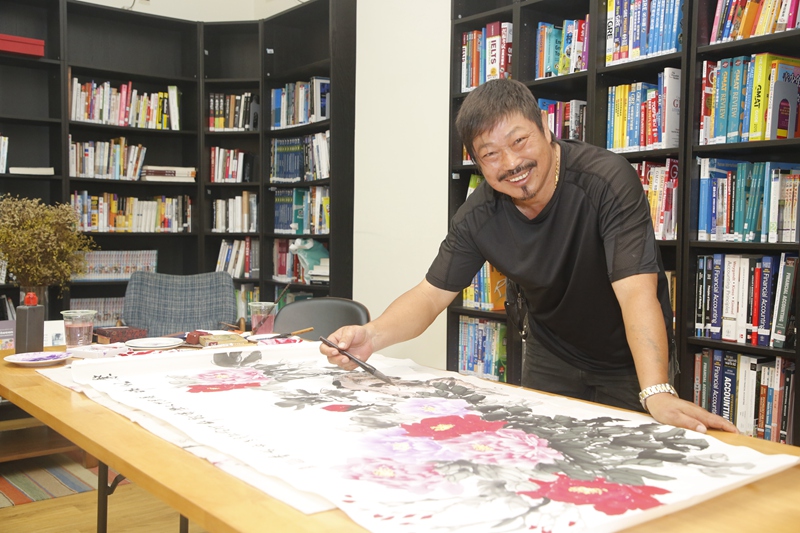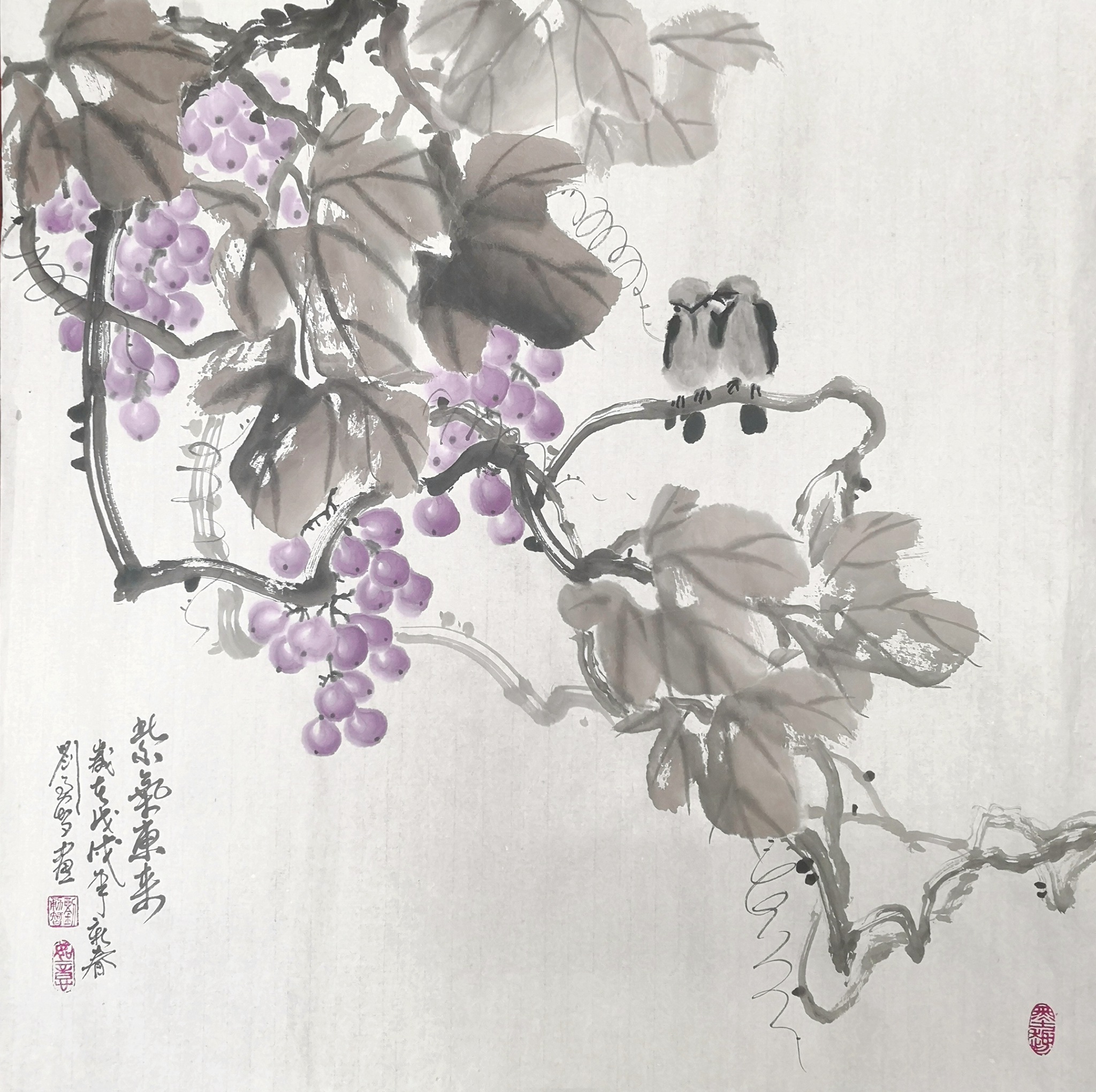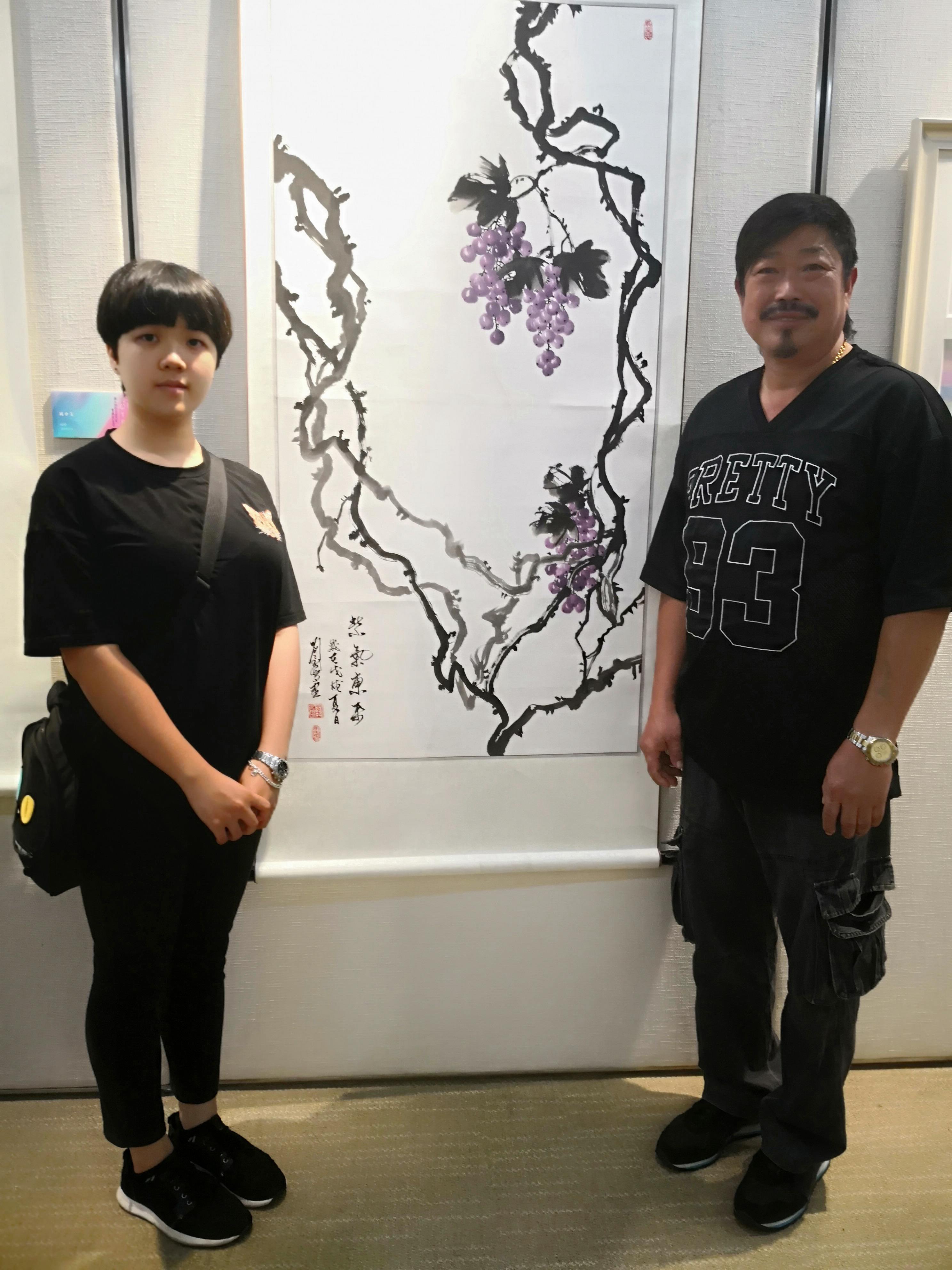Learning by Observing
Lao’s daughter started learning different styles of painting at a young age, including sketching and Chinese brush painting. He would keep her company and help her wash the palette and dispose of used paints. One day five years ago, instead of fulfilling his routine fatherly duty of cleaning up after his daughter finished painting, he decided on a whim to pick up the brush and start painting. Before he knew it, he watched a beautiful peony flower beginning to take shape on the rice paper. Spurred by his initial success, he went on to make several more paintings and felt quite satisfied with them. Wanting to get some objective feedback, he showed the paintings to other people, who commented that they looked like works of a master. With practice and encouragement, he became more and more confident and began to spend more time practicing painting. His daughter also taught him what she knew to help him improve his skills. Now the two of them often compare notes after painting. ‘She is my daughter, but she is also my teacher,’ Lao says.
The Devil Is in the Paint
According to Lao, the greatest challenge in Chinese brush painting is learning to maneuver the paint, because the same palette of paint can produce different effects depending on the shade of colour the painter creates, which in turn depends on the painter’s state of mind. For Lao, the first creation does not happen on the paper; it happens in the head. He needs to see the composition of the entire painting in his mind’s eye before he can commit the paint to paper.
Lao talks about painting with youthful vigour. Asked about the No 1 quality of a beginning painter, he offers two words, ‘thick skin.’ He explains, ‘Sometimes UM organises lectures and interest classes in Chinese brush painting or Chinese culture, I would always ask the lecturer if I could sit in on the class as a student.’
Making Like-minded Friends
Before he took up painting, Lao was just an average nine-to-five worker. But now his life is more colourful, with his paintings being frequently featured in art exhibitions and TV programmes. Although he stumbled upon this hobby only five years ago, he has made so much progress he can now confidently improvise at art exhibitions.
He loves to participate in art exhibitions, because it not only allows him to meet like-minded friends, but also helps him improve his own skills. Whenever he sees a painting he likes at an art exhibition, he would go home and try to imitate the painter’s style. ‘By imitating others, I gradually developed my own style,’ he says.
A Polymath
Lao mainly paints plants and animals. He is now more observant of everyday objects in search of inspiration for his next painting.
Among his many interests, such as gardening, keeping fish, and collecting handicrafts, painting remains his favorite. He especially loves to paint peony flowers. ‘Peony flowers are a symbol of wealth and prosperity. Its red colour speaks of good luck. Chinese people just love this flower,’ he says, face glowing with joy.
Source: My UM




